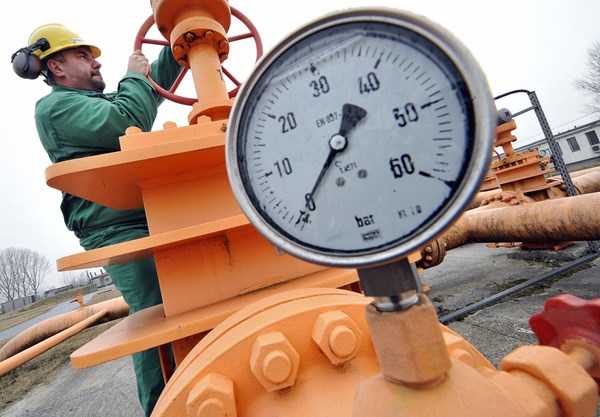Russian gas deliveries to Europe drop by 20 percent
Gazprom started 2020 by significantly reducing its gas deliveries to Europe. During the first eight days of January, Russian gas exports dropped by 20%, writes Kommersant, citing statistics from gas operators.
Transit through Ukraine has dropped by nearly two thirds, from 262 to 91 million cubic meters per day. On January 7, Gazprom supplied only half the average volume stipulated by its transit contract with Ukraine (180 million cubic meters), even though it will still have to pay for the guaranteed reserved capacity (65 billion cubic meters per year).
Deliveries through the Yamal-Europe pipeline, which is considered the cheapest route and was previously used at full capacity even in warm winters, have declined by 24% at the Kindratky inlet point and 30% at Vysokyi (70.1 and 6.3 million cubic meters per day, respectively).
The Nord Stream pipeline has barely compensated for the sharp decline in transit through the Ukrainian and Polish route. In December, its usage increased by only 1% to 173.4 million cubes per day.
Turkish Stream, which was officially commissioned by Vladimir Putin on January 8, is not even being used at half capacity, according to data from Bulgarian gas operators (less than 42 million cubic meters per day).
Apparently Gazprom is trying to get rid of the tens of billions of cubic meters of gas which it amassed in European reservoirs. At the end of 2019, the Russian company reported that it had sold 199 billion cubic meters to Europe. However, roughly 15% of this amount, around 30 billion cubic meters, did not actually find end buyers. It was stored in underground gas reservoirs, which reached all time records (nearly 90 billion cubic meters).
Gazprom effectively sold part of this gas to itself, through a repo deal with its subsidiary Gazprombank. Despite it being the heating season, gas prices are continuing to fall, and storing it is causing losses.
“If this winter remains so mild, it could be the warmest in the last 120 years,” observes Giacomo Masato, an analyst at Marex Spectron. “This means that by the end of March, we could see a new decline, which will last until the end of the year”.
At the German NCG hub, gas futures for February are being sold at €12.5 per MWh (roughly $148 per thousand cubic meters. On the ICE Endex in Amsterdam on Thursday, gas contracts became 1.8% cheaper – to €11.75 per MWh ($139 per thousand cubes). At the end of the third quarter of 2019, Gazprom’s average price in the EU was $169.8 per thousand cubic meters. The company has not been forced to sell gas so cheaply to the EU since 2004.
This year, the US plans to commission new facilities to liquefy 10.5 million tons of gas, and another 5 million tons will come from Qatar and Australia. This means that “the market will retain excess supply in 2020 too. Accordingly, there is no talk yet of the gas prices being restored,” warn analysts from Promsvyazbank.
